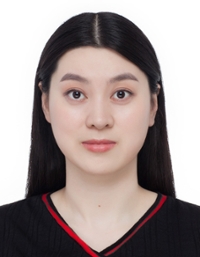Q&A with Qixuan Wang

Q. What projects are you currently working on?
A. I’m currently working on using spatial 3D genome data to reveal intratumor heterogeneity in Glioblastoma. Most clinical biopsies are conducted at a single site, this may provide incomplete/misleading information about tumor characteristics and predicted response to therapy. In addition, the extent and significance of 3D genomic intra-tumoral heterogeneity in GBM have not been studied yet. This motivated our study, which is the first spatial 3D genome study in GBM patients.
Q. Would you like to share a publication you are most proud of being associated with?
A. I’d like to share a study, “Subtype-specific 3D genome alteration in acute myeloid leukaemia,” that was published in Nature last year (https://pubmed.ncbi.nlm.nih.gov/36289338/). This study aims to explore the extent to which mutations in AML drive alterations in chromatin 3D structure and contribute to myeloid transformation. We were able to identify extensive and recurrent AML-specific promoter-enhancer and promoter-silencer loops. The role of repressive loops on their target genes were validated by CRISPR deletion and interference. Structural variation-induced enhancer-hijacking and silencer-hijacking events were further identified in AML samples. We validated the role of hijacked enhancers in AML cell growth using CRISPR screening and the role of hijacked silencers in downregulating gene through CRISPR-interference-mediated de-repression. Our study provides a resource for leukaemia studies and highlights the role of repressive loops and hijacked enhancer/repressor in human diseases.
Q. What have you learned that has made a difference for you?
A. Before I started my PhD, I spent some time taking machine learning courses on Coursera. Through the studying, I have begun to understand the underlying principles and techniques that empower computers to learn and make intelligent decisions. This has been a transformative experience, as I have witnessed the potential of machines to analyze huge amounts of data, recognize patterns, and make predictions with remarkable accuracy. Moreover, the interdisciplinary nature of machine learning has broadened my horizons, allowing me to explore the interconnectedness of various fields such as mathematics, statistics, and computer science. This multidisciplinary approach has not only enriched my technical skills but has also fostered a holistic perspective, enabling me to tackle complex problems from diverse angles.
Q. What is your favorite spot on campus and why?
A. My favorite spot on campus is the common area on each floor in the Simpson Querrey building, as it offers a perfect setting for various activities. During lunchtime, it serves as a gathering point for friends and colleagues, where we enjoy our meals together. In addition to being a place of relaxation, it also fosters a sense of community and collaboration. It serves as an informal meeting space, where we can catch up with our research partners, discuss the latest developments, and exchange valuable insights. It also allows us to connect and engage with individuals from other labs, expanding our network. Through these encounters, we can learn about different research endeavors, gain exposure to various fields, and establish meaningful connections that may lead to future collaborations or friendships.